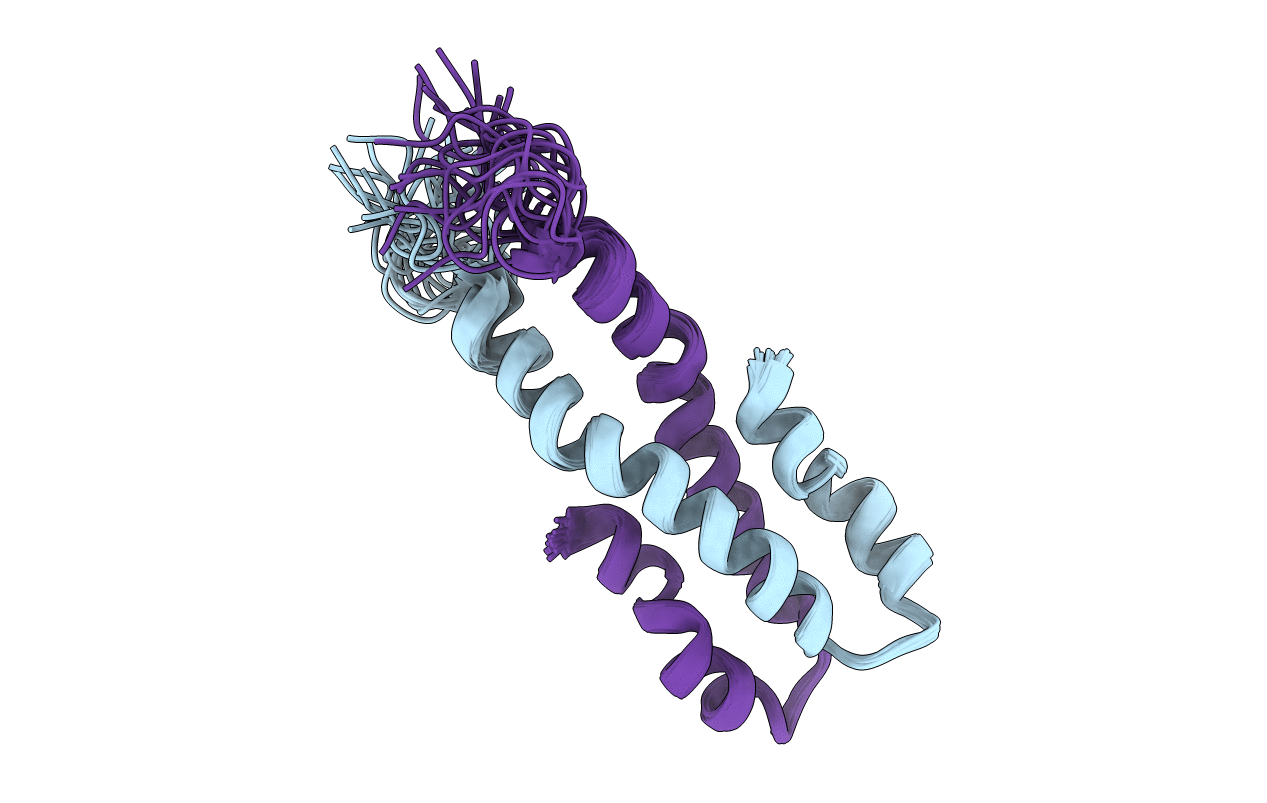
Deposition Date
2002-05-14
Release Date
2003-01-14
Last Version Date
2024-05-22
Entry Detail
PDB ID:
1LR1
Keywords:
Title:
Solution Structure of the Oligomerization Domain of the Bacterial Chromatin-Structuring Protein H-NS
Biological Source:
Source Organism:
Escherichia coli (Taxon ID: 562)
Host Organism:
Method Details:
Experimental Method:
Conformers Calculated:
100
Conformers Submitted:
20
Selection Criteria:
structures with the least restraint violations, structures with the lowest energy


